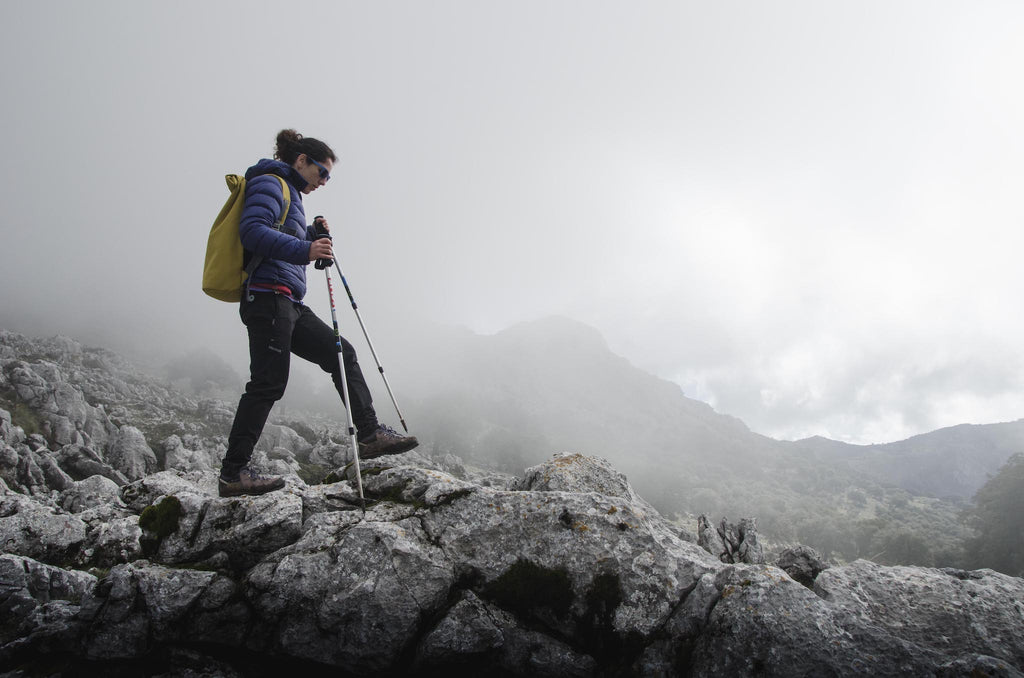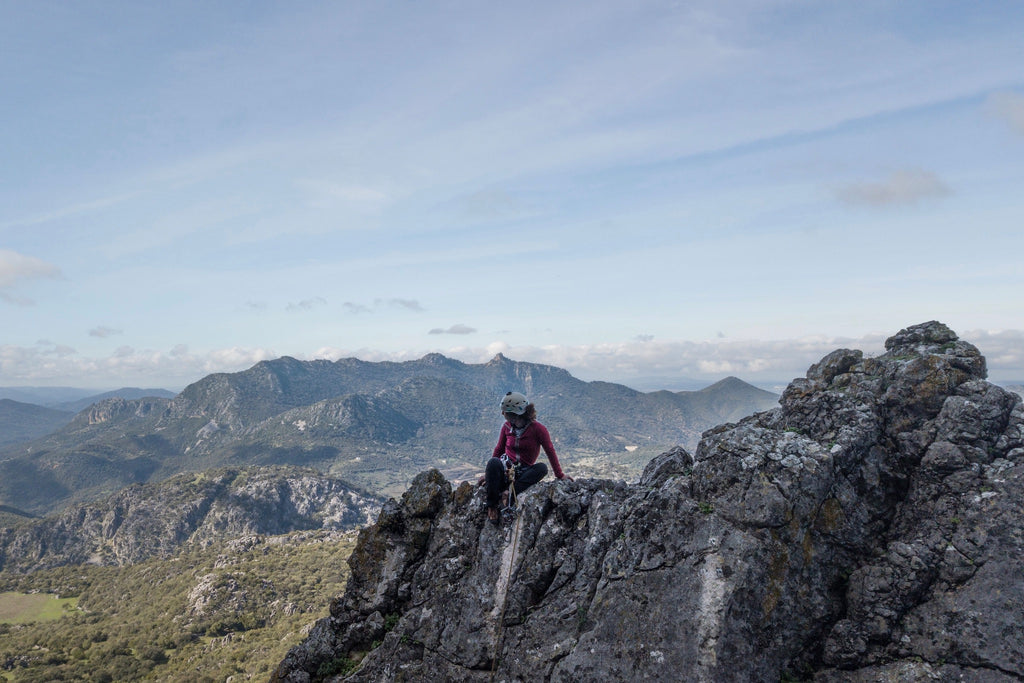
The rain in Spain falls mainly on the sierra de Grazalema – the wettest place in Spain, so they say. The village established in Moorish times is a typical “pueblo blanco” ensconced by several 1500m-limestone peaks. These peaks are the first barriers for clouds blown in from the Atlantic by warm humid winds having met no other significant obstacles en route east. Upon arrival at the sierra they condense and dump their rainfall on the sierra Grazalema in the province of Cádiz. It’s not uncommon to see snow here in during some of the winter’s colder days too.
The draw to Grazelema for me is not particularly the village itself, although beautiful with plenty of places to eat well and famous for its blanket making industry; I’m drawn to the surrounding mountains, the hiking trails, sport climbing crags and the unusual Spanish fir “pinsapo” tree species. The pinsapois is a kind of pine tree come monkey puzzle mix found at few other places about the planet and has been here certainly since the last ice age. In 1977 the area was declared a Biosphere Reserve thanks due to the wealth of flora and fauna and in 1984 became the first Natural Park of Andalucia.
Even during the weekend it is possible to be alone in these mountains, free of the sound of road traffic, our ears filled only with the sound of occasional cattle bell, shallow streams dribbling down the valleys, the clank of walking poles, boots on rock and the chirp and shrill of hidden wildlife that includes the wild boar, European mongoose, wild mountain goat, wild cat and the beech martin.
Above, when the ground heats up and begins to generate thermals of warm rising air, griffon vultures appear from their mountainside nests. Masters of the air with super wide wingspans, these magnificent almost Jurassic looking birds soar high above the peaks in groups of sometimes 20 or more. Food is scarce for these mountain giants and life must be difficult for them.
Winter and spring are my favourite seasons to get lost in this sierra. More favourable air temperatures compared to those of late spring and summer allow us to tackle sunny morning climbing routes that wind up sheer limestone walls. These walls are a mixture of grey, orange and black rock, crowned with trees above at the anchor point, where the single pitch climbing routes stop. There is something captivating about the light here in the sierra too, especially at first and last light of the day. Booming wintery clouds cast moving shadows across the hills and mountains, momentarily enveloping the view completely, threatening rain and then quickly lifting to reveal blue sky and warmth worthy of an English summer.
The network of trails here is wide spread connecting equally interesting villages such as the sleepy Benaocaz and the paraglider’s playground - the village of Algodonales further north. Next to Algodonales and separated by a couple of valleys is the village of Zahara sitting proudly atop a hill guarding the reservoir below. Between these villages, roads wind and switchback, often steeply through cork oak forests, mountain col’s and meadow; finding a quiet wild spot to stay with the campervan here is easy. Night brings with it a sky blasted with stars and a reminder of what we miss when back in our light polluted towns and cities.
The wettest place in Spain is for sure one of my favourite places to be – anywhere. When late spring starts to heat up and show signs of the approaching summer, we ready the van and head north in search of cooler Spanish spaces, whether that’s in the mountains or by the sea.
Will Appleyard




